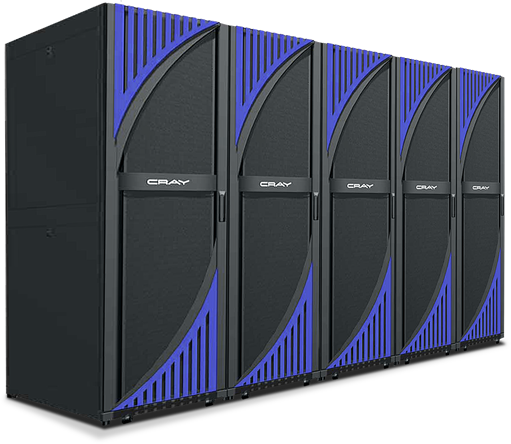 Today Cray rolled out the new Cray CS-Storm high-density accelerator compute system. Based on the Cray CS300 cluster supercomputer line acquired from Appro in 2012, the Cray CS-Storm features up to eight Nvidia Tesla GPU accelerators and a peak performance of more than 11 teraflops per node.
Today Cray rolled out the new Cray CS-Storm high-density accelerator compute system. Based on the Cray CS300 cluster supercomputer line acquired from Appro in 2012, the Cray CS-Storm features up to eight Nvidia Tesla GPU accelerators and a peak performance of more than 11 teraflops per node.
Designed to support highly scalable applications in areas such as energy, life sciences, financial services, and geospatial intelligence, the Cray CS-Storm provides exceptional performance, energy efficiency and reliability within a small footprint. The system leverages the supercomputing architecture of the air-cooled Cray CS300 system, and includes the Cray Advanced Cluster Engine cluster management software, the complete Cray Programming Environment on CS, and NVIDIA Tesla K40 GPU accelerators. The Cray CS-Storm system includes Intel Xeon E5 2600 v2 processors.
With an impressive eight-to-two ratio of GPUs to CPUs, the Cray CS-Storm is an absolute beast of a system,” said Barry Bolding, Cray’s vice president of marketing and business development. “The Cray CS-Storm is built to meet the most demanding compute requirements for production scalability, while also delivering a lower total-cost-of-ownership for customers with accelerator workload environments. With the combination of an extremely efficient cooling infrastructure, Cray’s high-productivity cluster software environment and powerful NVIDIA K40 accelerators, the Cray CS-Storm is designed to be a production workhorse for accelerator-based applications in important areas such as seismic simulation, machine learning and scientific computing.”
The Cray CS-Storm system is available in flexible configurations. Each 48U standard rack can hold 22 2U compute servers, each with up to eight GPUs and two CPUs delivering more than 250 teraflops per rack. A four cabinet Cray CS-Storm system is capable of delivering more than one petaflop of peak performance.
The Cray CS-Storm system is also available with a comprehensive HPC cluster software stack with tools that are compatible with open source and commercial compilers, debuggers, schedulers and libraries. The Cray Programming Environment on CS, which includes Cray’s Compiling Environment, Cray Scientific and Math Libraries, and Cray Performance, Measurement, Analysis and Porting Tools, are available on the Cray CS-Storm system and is specifically tuned for high performance GPU computing.
Adding a GPU-dense, air-cooled option to the already-extensive lineup of Cray’s CS300 offerings will further expand the market for this standards-based cluster supercomputer product,” said Steve Conway, IDC research vice president for high performance computing. “IDC research showed that the proportion of sites employing accelerators and other coprocessors in their HPC systems jumped from 28.2 percent in 2011 to 76.9 percent in 2013, and GPUs are the clear leaders in this category. Cray has been on a roll, and ramped-up sales of its Cray CS300 line have helped.”
The Cray CS300 series of cluster supercomputers are scalable, cluster solutions that group optimized, industry-standard building block server platforms into a unified, fully-integrated system. Available with air or liquid-cooled architectures, Cray CS300 systems provide superior price/performance, energy efficiency and configuration flexibility. The systems are integrated with Cray’s HPC cluster software stack and include software tools compatible with most open source and commercial compilers, schedulers, and libraries. Cray CS300 systems also feature the Cray Advanced Cluster Engine, an essential management software suite designed to provide network, server, cluster and storage management capabilities that are necessary to run large, complex technical applications.
Sign up for our insideHPC Newsletter.




